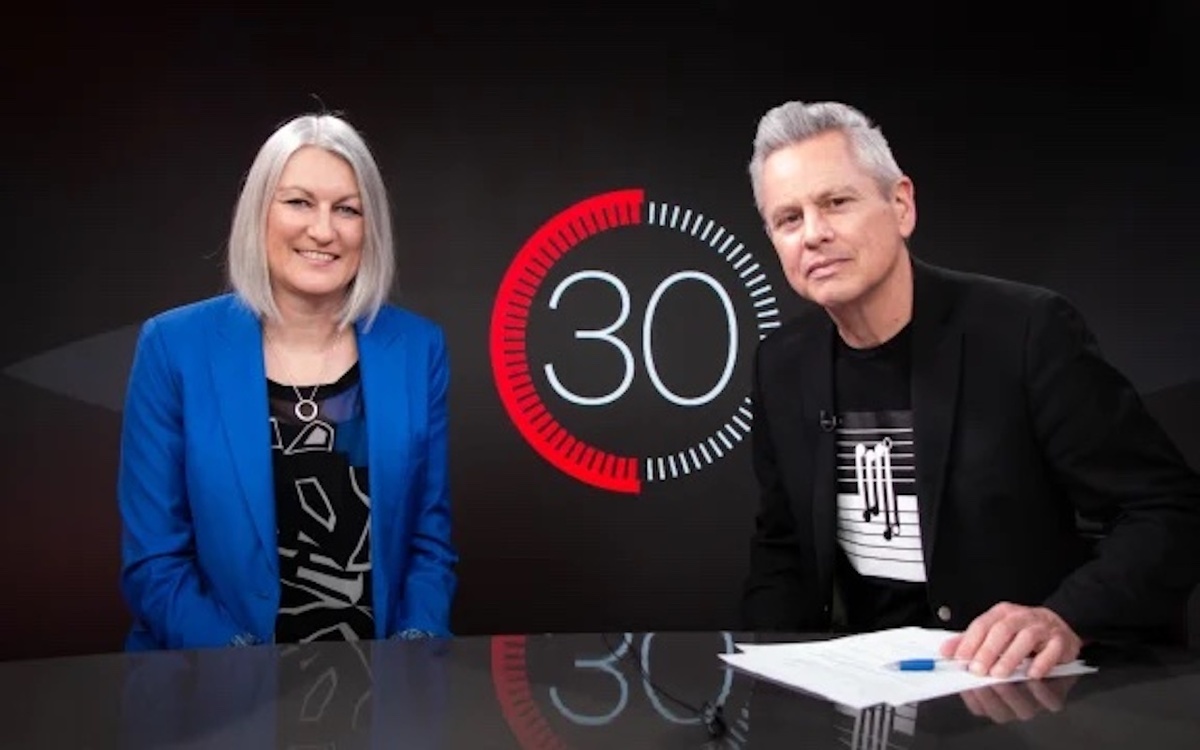Why can't we get the kind of long-term mortgages with low break fees common in the US?
RNZ
27 September 2024, 7:35 PM
 Antonia Watson, chief executive of ANZ
Antonia Watson, chief executive of ANZNew Zealanders like a fixed term mortgage - 90 percent of ours are locked in.
But we tend to fix for short terms.
In the US, 30-year terms are common while here, there is almost nothing fixed for more than five years.
Most New Zealand lending will refix within the next year.
So what's going on, why don't we get a 30-year fix option, and would we want one anyway?
The US's 30-year deals
Antonia Watson, chief executive of ANZ, told 30' with Guyon Espiner that New Zealand options were more limited because of the interest rate risk involved for banks in long-term fixes.
When banks lend money for a certain term, they need to know that they can access funding for that same term at a rate that works.
They usually need to hedge to protect themselves against future interest rate movements, in case rates move up significantly from the rate the borrower has agreed to pay.
The US has the scale and size in its wholesale markets to make that possible, but few other countries do.
"If I guarantee you that you can pay me 6 percent for the next year, I want to hedge that," Watson said.
"No matter what happens, for one year, I'm only I'm going to get 6 percent fee off you whether the interest rates go up and down…
"So we go out and say to someone 'who wants to take Guyon's interest 6 percent fixed and give me back as the bank the floating rate'.
So that's what's called hedging in New Zealand.
We can't hedge for 30 years - in the US, they can.
They've just got much deeper markets.
They've got government bonds that have been issued out 30 years that can act as that hedge and provide that market for rates that long.
We just don't have depth in our market out past sort of about five years."
The US also has government-backed lending organisations Freddie Mac and Fannie Mae that helps lenders manage their interest rate risk by buying loans and selling them as mortgage-backed securities.
Claire Matthews, a banking expert at Massey University, said even the US banks struggled with the interest rate risk involved.
"That's why they have had the bank failures over there. Our market is so much smaller, it would become even more of an issue here."
She said borrowers who signed up to a particular rate and then saw interest rates drop would not be as committed to their home loans. In the US, people could often walk away from a loan much more easily than in New Zealand.
Watson said a longer-term fix could be expected to cost more because of the lack of supply and demand at that loan term.
"Because there isn't any trading there, there aren't any ... it'd be very hard for us to hedge, and naturally we'd have to pay more for that. So naturally you would have to pay more for your home loan."
In the US at the moment, a typical 30-year interest rate fix might be about 6.75 percent.

Claire Matthews says 30-year mortgage terms "could be popular" depending on the terms and conditions. Photo: Supplied/ David Wiltshire
Matthews said she had been approached last year by someone who wanted to offer a 30-year fix option in the New Zealand market but nothing had come of it.
"There are people looking at it … parties saying 'is there something we could do to have something different in the marketplace to compete'.
"It could be popular, depending on the terms and conditions. If you knew you could take out a 4 percent mortgage and it wasn't going to change, people could potentially be reasonably happy about that ... But if it was something that could be being made to work, it would be being made to work."
Longer fixes have been offered
In 2015, TSB offered a 10-year fixed rate at 5.95 percent, which was not taken up by many borrowers.
At the time, TSB said the average one-year rate over the previous 10 years was 7.26 per cent and the average three-year rate was 7.49 per cent.
BNZ was offering a seven-year rate of 6.89 per cent. In that context, the 5.95 percent fix could have seemed appealing.
But anyone who took the deal might have come to regret it when interest rates fell to 2.99 percent for five years in 2020.
Break fees matter
A key factor for borrowers would be what would happen if they wanted to get out of a long-term fix, for example if they wanted to sell their house, Matthews said.
In the US, customers can break a 30-year fix easily.
But in New Zealand, when someone wants to break a fixed-term mortgage, they have to pay a break fee.
This is calculated according to the amount of time left to go on the fixed term, the interest rate they have agreed to pay and the prevailing market rates.
David Cunningham, chief executive of Squirrel and former chief-executive of The Co-Operative Bank, said the break costs for the TSB 10-year fix were "horrific" because of the bank hedging involved.
"If the customer broke the fixed term they could easily have been up for tens of thousands of dollars of break fees. Even five-year fixed terms can have very big break fees, which reflect the cost to the bank of unwinding the hedging transaction in the wholesale markets. But … if you managed to lock in a five-year fixed rate when they hit 2.99 percent about 4 years ago, you were laughing all the way to the bank."
In the 1970s, the government offered low-interest loans to first-home buyers fixed for 30 years via the State Advances Corporation but the rate was reviewed every five years and relied on income remaining below a threshold.



